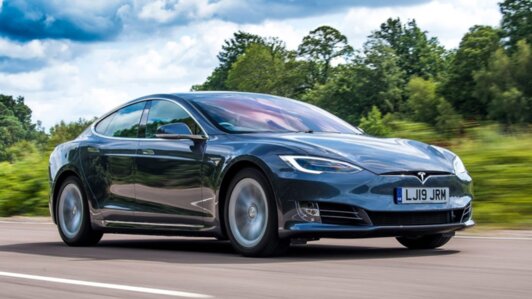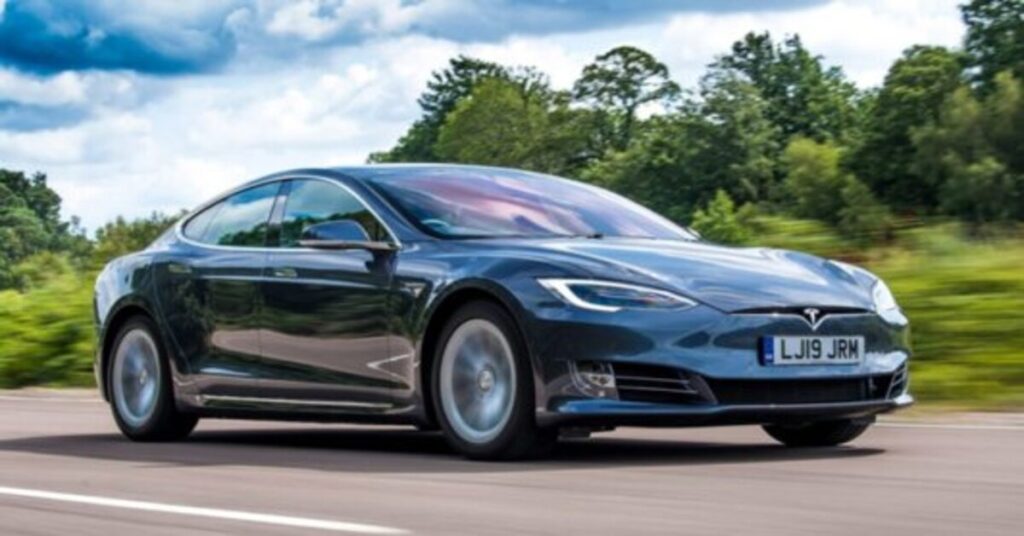
Tesla is one of the most reputed EVs car manufacturers and competes with different EVs manufacturers. Tesla has nailed the whole industry in terms of power, performance, and range of the vehicles. Tesla is the only EV manufacturer that introduced users to the supercharging technique. Sometimes the slower charging rate of Tesla may frustrate the users and may consume their time. Do you know why Tesla only charging at 16 amps?
There are many different reasons and factors behind the slow charging rate of Tesla which is at 16 amps. The charging rate may be slower even if you are using high-speed charging. The reason can be a lower amperage of the charging outlet, a less capable charging cable that doesn’t have a tendency to acquire power fastly, or the charging of any other electrical device on the same socket of charging. Generally, Tesla has a typical charging cable of 40-50 amps.
There may also be the possibility that your charging system is facing any internal issue such as a fault in the charging system, a fault in the charging socket, or problems in the ongoing charging electronics.
There may be a high possibility that your charging system is facing technical failure and because of that you are not able to charge your Tesla at a higher speed. The Tesla circuit barker maximum output may face a shortage of onboard charging capability. It can also be a reason that your Tesla Model S doesn’t have dedicated enough power to charge your Tesla.
Later, in the article, we’ll be discussing every piece of information about why your Tesla is only charging at 16 amps and the amps available by the Tesla. So, if you are desiring a detailed list of information make sure to go through the whole content.
Why Is Tesla Only Charging At 16 Amps?
A typical Tesla charger has a charging rate of 40-50 amps which is very fast as compared to the Tesla 16 Amps charging system. This can be more frustrating for Tesla owners who nearly face these types of issues. So, do you know what causes your Tesla to charge at only 16-Amps?
Some of the reasons are highlighted in the second part of the article but here we’ll be explaining a detailed list of causes.
- Low Amperage Charging Outlet: If you are charging your Tesla with the low amperage charging outlet then it has a high chance that your Tesla will hold a slow charge which may affect the overall charging time of Tesla. The low amperage charging outlet or wall outlet has a limited power source. So, the Tesla charger will get less power and result in slow charging.
- Old or Less Powerful Cable: Using low or less powerful charging cables may be also one reason behind the slow charging of Tesla. You all know Tesla has one of the sophisticated charging systems and they use high-performance charging cables in support of fast charging. What type of charging cable you are using to charge your Tesla also affected the Tesla charging time. If the cable is damaged and not working properly, it will result in less delivery of power resulting in a slower charge.
- Fault In The Charging Port Or Charging Electronics: It is very necessary to keep your charging port or charging electronics in good condition for fast charging. The charging system of Tesla can be greatly affected if there will be any issue or fault in the charging port or onboard charging electronics.
- Using the Same Circuit For another Electrical Device: If you are drawing power from the same charging circuit to charge any other electrical device, then it may also hamper the charging time of Tesla. Connecting multiple electrical devices on the same circuit reduces the available power and results in a slow charging rate. So, to avoid the slow charging of Tesla, never connect too many appliances in the Tesla charging circuit.
How Many Amps is a Tesla Charger?
How many amps a Tesla charger can deliver is highly dependent on the different Tesla models and what types of charging the Model Tesla is using. Different models of Tesla have different chargers and charging power. Every Model has a different capability to accept power. However, sometimes it also depends on the available power supply to the Tesla’s charging system.
Typically, most Tesla Model has an onboard charger and the capacity to accept up to 40 to 50 amps of charging current. The more amps of current allow the Tesla vehicles to charge more quickly as compared to fewer amps of charging current. The charging time may also depend on the available power supply even if you are using a fast charging system of 40 to 50 amps.
Let’s conclude with the help of different Tesla models. A Tesla Model 3 has an onboard charger of 50 amps which can easily charge the battery at the rate of 72 miles of range in a single hour. Just imagine you can cover up to 350 miles by just charging your Tesla Model 3 for 3 hours. The charging circuit of the Tesla Model 3 must be connected to a 240-volt level 2 charging station.
You must be knowing Tesla has widely spread its charging system. Now you can charge your Tesla anywhere you want because it offers both home and public charging. All the chargers are available in different amps depending upon the need of the user or the available power supply.
Tesla Level 2 wall charger is designed for home or business use. The charger is available in 40 amps and 80 amps to facilitate the users with the quick charging system.
You must be wondering why Tesla is working on the supercharger network. The reason is Tesla is allowing all the users to shift over to electric vehicles and enjoy long-distance trips with the help of the fastest charging network. These networks are specially designed for charging vehicles quickly and easily.
How Do I Charge My Tesla and What Are The Basic Rules Of Tesla Charging?
Hell yes, you are a proud owner of a Tesla car but the most critical issue with the Tesla is ranger anxiety, almost all owners of Tesla has range anxiety, and to eliminate the anxiety of the user Tesla is constantly increasing their battery technology as long as possible. To get the best out of the Tesla Range, it is also advisable to use a good charging system as well good charging pattern.

A good charging system and pattern prevent the battery from any further damage as compared to the frequent battery charging pattern. No doubt, the battery of Tesla is packed with lithium-ion which has a higher density than any other battery pack. But you as an owner also have to follow basic rules of charging for increasing the Tesla range. So, let’s see what are the basic rules of Tesla charging.
- It is always recommended to charge your Tesla not more than 90% because charging your Tesla battery up to 100% more frequently puts lots of strain on the battery which may also hamper the battery performance. Don’t charge over 90% unless you are planning for long trips or necessary.
- Never allow your Tesla battery to come below 20%. Increasing the battery % of Tesla charging over 90% is known as one of the bad ways of Tesla charging like that taking your Tesla battery % below 20% is not recommended as it may damage your battery potential. So, charge your Tesla battery when it is nearly by 20%.
- As the election car battery delivers more range in the battery percentage of 0 to 80%. So, you have to select a charging pattern properly to acquire this.
- As it is said that slow and frequent charging of Tesla batteries may increase the range and performance of the battery. The slower will be the charger, the more battery will be charged.
- Below 7% is the red area, never try to reach at 7% or leave your Tesla overnight. It may discharge the battery as well damage the battery.
Conclusion
There are lots of reasons behind the Tesla only charging at 16 amps. The maximum circuit breaker is one of the common issues of slow charging.
If you are continuously facing slow charging of 16 amps in your Tesla, you should inspect the charging socket properly. If it is, try using a new charging plug. Generally, Tesla uses 40-50 amps of charging socket which results in the fast charging of Tesla.
There may be some faults in the Tesla charging system, that’s why your Tesla is not well in charging quickly. If you want to quickly charge the Tesla battery, you have to fix all the battery system issues.
FAQs
Why is my Tesla not charging at full speed?
If your Tesla is facing slowing charging then it has a high probability of maximum circuit break which hamper the board charging capabilities. Sometimes the available source of power is also limited so, if you are using any public charging network you may find this case. If your Tesla is not charging at full speed there may be an issue with your charging socket.
Is it Ok to slow-charge, Tesla?
Yes, the slow charging method in Tesls is ok. This is usually done for increasing the range of Tesla. The method also enhances Tesla’s battery as it generates less heat. Slow charging means less heat which leads to a high potential and a healthy battery.
Should I charge my Tesla to 90% or 100%?
It is recommended to charge your Tesla only up to 90% for reducing the risk of battery damage but if it is necessary or planning for a long trip you can charge it up to 100%.
Posts Related to Electric Cars and Batteries
- Tesla Knocking Sound When Accelerating – Complete Guide
- Model 3 Clicking Noise When Accelerating
- Tesla Beeping Sound While Parked – (Tesla Model 3, Model X, Model Y, Model S)
- Tesla Model S Wobble Problems And Solution- Complete 2024 Guide
- Tesla Model 3 SR+ LFP Battery Capacity Per Year
- Tesla Model X Air Suspension Repair Cost
- Tesla Low Voltage Battery Warning Model X-Complete Guide 2024
- Tesla Model X Battery Heater Replacement – Complete Guide 2024
- Tesla Model X 12V Battery Replacement-Complete Guide 2024
- Tesla Bms W008 (Model X, Model Y, Model 3)- Complete Guide 2024

